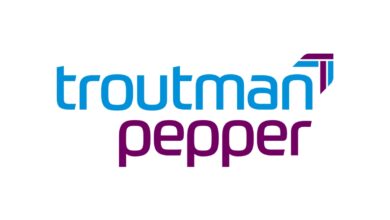Navigating the FinTech Landscape: Challenges, Innovations, and Transformations

CXOToday has engaged in an exclusive interview with Mr. Kapil Kapoor, Chief Product & Technology Officer, CredAble, for National Technology Day.
- What are the key challenges faced by FinTech leaders in navigating the evolving financial technology landscape?
Answer:
In the last two years, we have witnessed a challenging funding environment for FinTechs. This funding episode, in my opinion, was a healthy correction. For FinTechs, the valuations today look a lot more reasonable than they were a few years ago. It has ushered in a great deal of efficiency in how FinTechs operate. To remain competitive, FinTechs must run at a steady pace. In addition to this, as technological advancements continue to accelerate, the ability of FinTechs to strategically prioritise investments in transformative technologies will increasingly differentiate the leaders from the laggards. Investments in data platform modernisation, Artificial Intelligence (AI), and cloud computing should not be looked at as just cost centres. They are crucial bets that FinTechs need to take to shape the future of financial services.
- What are the key benefits of digital lending technologies for borrowers, and how are they transforming the borrowing experience?
Answer:
In no other area has the rapid transformation to digital financial services been more apparent than in the lending landscape. Given the digital lending advancements we have made in the last few years, it’s safe to say that we are well on our way to ensuring better access to credit for every Indian.
A majority of financial institution executives today seek a greater deal of consistency in loan portfolio management and the credit approval process. By leveraging integrated data in a single loan origination system—you can ensure that lenders are spending close to 30-50% less time on decision-making. All of
which will translate into more profitability down the road and simplified borrowing experiences.
- How are digital lending platforms addressing the challenges of traditional lending methods, such as accessibility and affordability?
Answer:
Digital lending platforms leverage alternative data sources to assess the creditworthiness of borrowers. Alternative data sources allow deeper insights into borrower finance, considerably improving credit underwriting and ensuring better-quality risk decisions. Armed with AI capabilities and a
data-driven approach, digital lenders are uniquely positioned to build an appropriate credit-worthy cohort of potential borrowers.
Apart from this, digital lending platforms significantly enhance the end-to-end loan origination and processing performance of a lender. While cost efficiencies are realised by minimising the number of systems involved in the lending practices—by breaking down operations obstacles, lenders have more time in hand to engage in relationship-building activities and secure referrals for other new clients.
- How can systems be designed to thrive in adversity and ensure sustainable growth in the FinTech sector?
Answer:
In an industry such as ours, where every transaction counts, even the slightest glitch can have cascading effects. The approach to building resilience for FinTechs should be rooted in the adaptability of their IT infrastructure. This simply means that FinTechs need to develop scalable infrastructure that can dynamically adjust to fluctuations in transaction volumes while accommodating rapid, sustainable growth. Regularly conducting stress tests under simulated conditions is imperative to ensure that new-age digital financing systems can withstand peak loads and cater to evolving use cases.
- What are the key features and benefits of next-gen working capital tech, and how can it address the challenges faced by MSMEs in accessing working capital?
Answer:
Apart from enabling on-demand working capital, next-generation solutions are offering businesses what they want—which is providing customisable
pre-qualified product offers embedded at the point of interaction. This means that FinTech lenders now have the flexibility to mix and match best-in-class loan providers to build their market-leading working capital financing products and experiences. For borrowers, next-gen working capital tech brings down the application-to-cash process to just 24-48 hours. This is a massive impetus for the underserved Micro, Small, and Medium Enterprises (MSMEs) segment, with $819 billion of addressable demand. Next-gen working capital financing solutions are designed to help MSMEs overcome credit limitations and significantly revolutionise the way they manage working capital tech.



